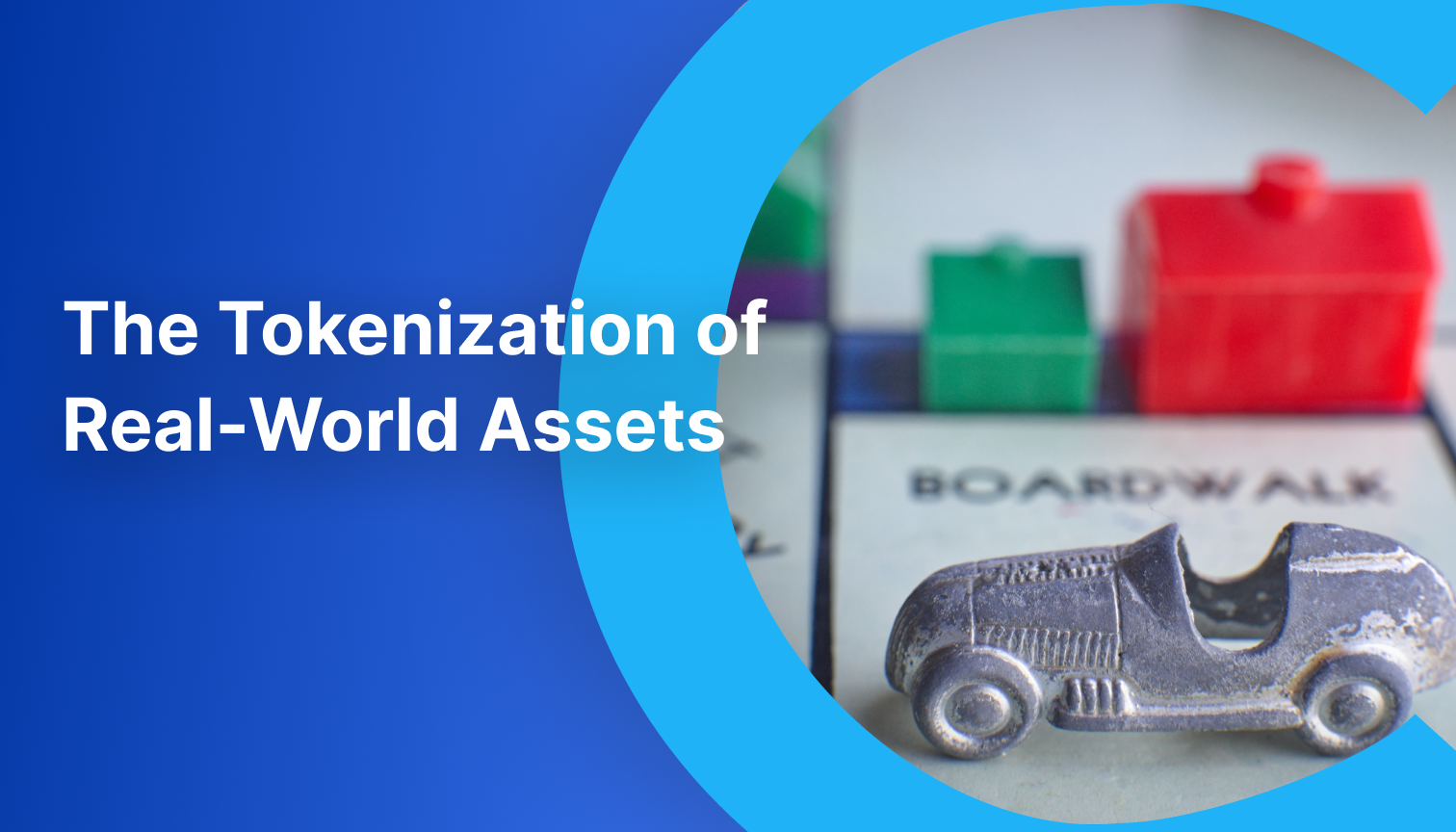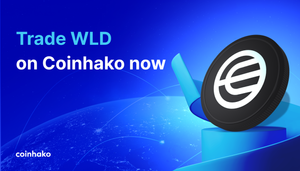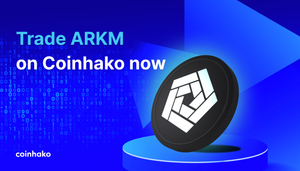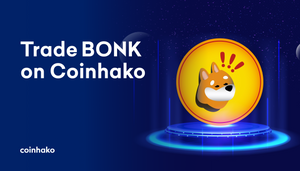For many of us, owning a digital house usually refers the houses in games like Sims or Animal Crossing. For a long time, the idea of home ownership has been tied to the idea of being able to see and touch it physically. But with blockchain technology, you can not only own pieces of a house, but artwork and gold digitally.
What are real-world assets?
Real-world assets (RWAs), in the context of finance and investing, refer to tangible or physical assets that have inherent value, such as real estate properties, precious metals, or even artworks. These assets have traditionally been limited by factors like illiquidity and high entry barriers for investors.
What is tokenization?
Tokenization is a process that involves representing real-world assets as digital tokens on a blockchain. This means that the ownership of these assets can be divided into smaller units and represented digitally. By tokenising real-world assets, it becomes easier to trade and transfer ownership of these assets in a more efficient and cost-effective manner.
How to tokenize real-world assets?
Tokenizing real-world assets involves several steps and considerations:
Choosing a Blockchain Platform: Ideally, the blockchain platform should support tokenization and aligns with specific requirements — Ethereum is a popular choice due to its robust smart contract capabilities, but other platforms like Polkadot also offer tokenization features.
Legal and Regulatory Compliance: Compliance with all relevant legal and regulatory frameworks in the various jurisdictions, understanding the requirements, and ensuring compliance with securities laws, property rights, and other applicable regulations is extremely important.
Asset Evaluation and Fractionalization: Determining the real-world asset's value and the desired fractionalization approach is essential to allow for broader ownership and liquidity.
Smart Contract Development: Developing smart contracts on the chosen blockchain platform to represent the tokens and defining their functionalities such as ownership transfer, distribution of profits, voting rights, and compliance with regulatory requirements.
Token Issuance: Each token represents a fraction of the underlying real-world asset. The issuance process involves deploying the smart contract and generating the tokens according to the defined fractionalization model.
Establishing a Tokenized Asset Marketplace: Listing the tokenized asset on decentralized exchanges (DEXs) or establishing a dedicated marketplace for trading the tokens. This will allow investors to buy, sell, and trade the tokenized asset.
What are some of the networks used for tokenization?

Several networks are involved in the tokenization of real-world assets — here are some commonly used cryptocurrencies in real-world asset tokenization:
Ethereum (ETH): Ethereum is one of the most popular blockchain platforms for tokenization due to its robust smart contract functionality. Many real-world asset tokenization projects, including real estate, art, and investment funds, have been built on the Ethereum blockchain.
Polkadot (DOT): Polkadot is a multi-chain platform that allows for interoperability between different blockchains. It provides a framework for building and connecting specialized blockchains, making it suitable for tokenizing real-world assets across various chains.
Stellar (XLM): Stellar is a blockchain platform designed for fast and low-cost transactions. It has been used for tokenizing assets such as real estate, commodities, and fiat currencies. Stellar's focus on cross-border transactions and its integration with the traditional financial system make it suitable for certain real-world asset tokenization use cases.
Tezos (XTZ): Tezos is a self-amending blockchain platform that allows for the creation of smart contracts and digital assets. It offers features like formal verification and on-chain governance. Tezos has been used for tokenizing various assets, including real estate, art, and investment funds.
Cardano (ADA): Cardano is a blockchain platform that emphasizes security, scalability, and sustainability. It offers features like a layered architecture and a proof-of-stake consensus mechanism. Cardano has been exploring real-world asset tokenization use cases, and projects are being developed to leverage its capabilities.
👉Trade RWA tokens now
What are the benefits of tokenizing RWAs?
There are several potential benefits for the tokenization of RWAs:
Liquidity
Certain real-world assets, such as real estate or fine art, are inherently illiquid due to their physical nature and limited buyer pool. This lack of liquidity creates challenges for investors who wish to capitalize on their investments quickly.
Tokenization offers several benefits for both investors and asset owners, like the ability to trade tokenized assets instantly on digital exchanges 24/7. This provides liquidity around the clock while eliminating intermediaries typically involved in traditional asset trading processes.
Fractional ownership
Fractional ownership is a revolutionary concept that has opened up new opportunities for small investors to gain exposure to high-value or exclusive assets. This innovative approach allows individuals with limited financial resources to participate in investments that were previously only accessible to large corporations or wealthy individuals.
Furthermore, fractional ownership platforms often provide additional services and benefits — like professional management services to ensure assets are well-maintained and protected. Additionally, some platforms facilitate liquidity by allowing investors to trade their shares with other participants on secondary markets.
Transparency
Tokenising assets also means ownership can be recorded and tracked on a blockchain. This enables stakeholders to have a clear and verifiable view of who owns what at any given time. The transparency offered by tokenization not only helps prevent fraud and disputes but also fosters trust among participants in complex ecosystems like financial markets or supply chains.
Tokenization also facilitates improved auditability by simplifying the verification process. Traditional audits often involve complex procedures to establish ownership and track asset transfers. However, with tokenization, these processes can be streamlined since all relevant information is stored digitally on the blockchain.
Risk diversification
One of the key advantages of tokenization is its potential to reduce investment risk through portfolio diversification. Investors gain exposure to a broader range of assets without the need for substantial capital outlay, allowing for better risk management by spreading investments across different asset classes that have historically shown non-correlated or low-correlated returns.
By doing so, investors can mitigate the impact of any underperforming assets on their overall portfolio value, while enjoying increased liquidity and flexibility. Digital tokens can be easily bought and sold on various trading platforms or exchanges with minimal transaction costs and reduced settlement times compared to traditional markets. This liquidity enables investors to quickly adjust their portfolios based on market conditions or changing investment objectives.
What are some challenges of tokenizing RWAs?
When it comes to tokenising real-world assets, there are various regulatory challenges that need to be examined and addressed. These challenges encompass legal frameworks, regulatory compliance, investor protection, and smart contract security. Establishing proper legal frameworks is of utmost importance in this context. This involves creating a well-defined set of rules and regulations that govern the tokenization process and ensure compliance with existing laws.
Adhering to relevant regulations helps build trust within the market and ensures transparency in tokenised asset transactions. Compliance measures such as KYC (Know Your Customer) and AML (Anti-Money Laundering) procedures play a vital role in protecting investors' interests and preventing fraudulent activities.
The Potential of RWA Tokenization
It's important to note that while real-world asset tokenization shows great promise, there are still challenges to overcome, including regulatory hurdles, technological scalability, and establishing trust in the digital asset space. However, with ongoing innovation and collaboration among industry participants, the future potential of real-world asset tokenization is promising, and it has the potential to reshape the way we invest, trade, and access assets.
Disclaimer: All writers’ opinions are their own and do not constitute financial advice. As a company, we do our best to provide information that is accurate and valuable. The contents of this blog post are intended for educational purposes only. Individuals are advised to perform due diligence before purchasing any cryptocurrencies as these assets are subject to high volatility, and understand the risks associated with trading cryptocurrencies.
👉 Join us on Telegram and Instagram
🤔 For any queries, please reach out to us here, or visit our Help page.
Copyright © Coinhako 2023 All Rights Reserved. Read more on our terms of use of this blog. All opinions expressed here by Coinhako.com are intended for educational purposes, taken from the research and experiences of the writers of the platform, and should not be taken as investment or financial advice.






